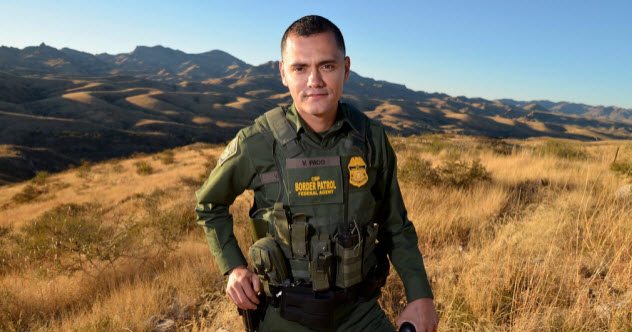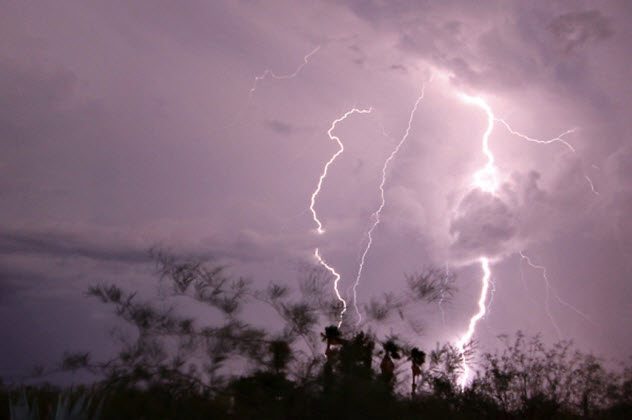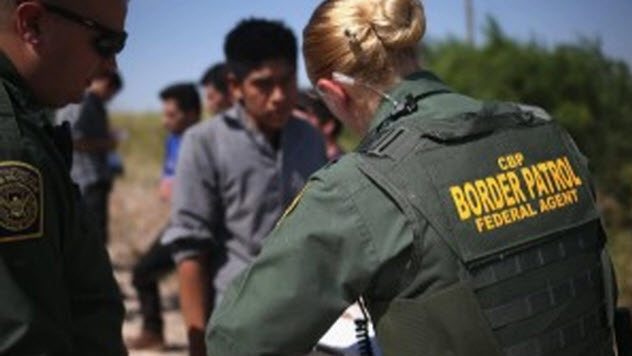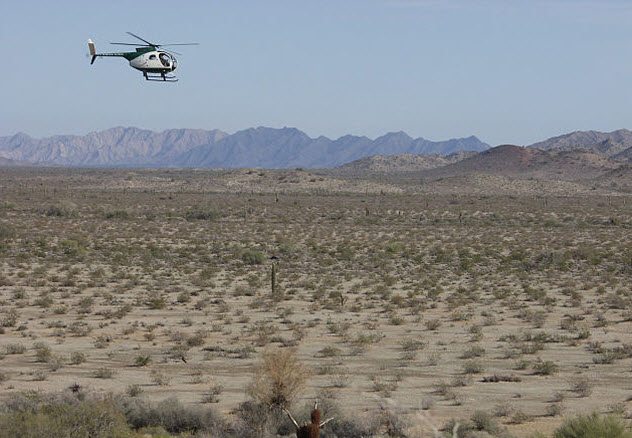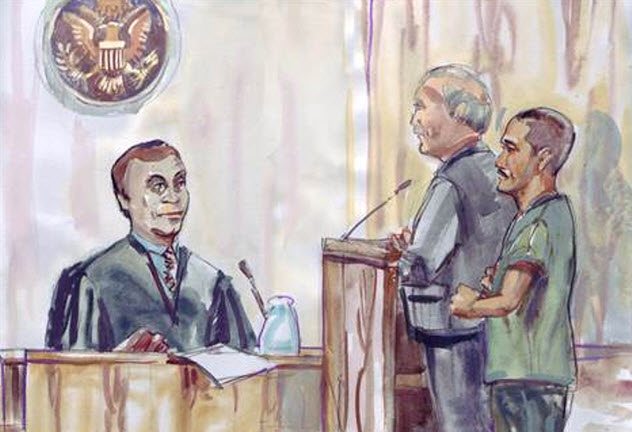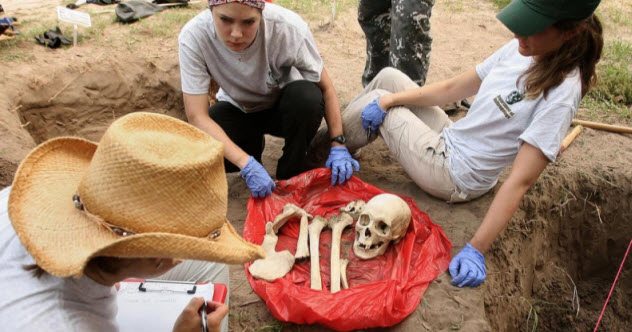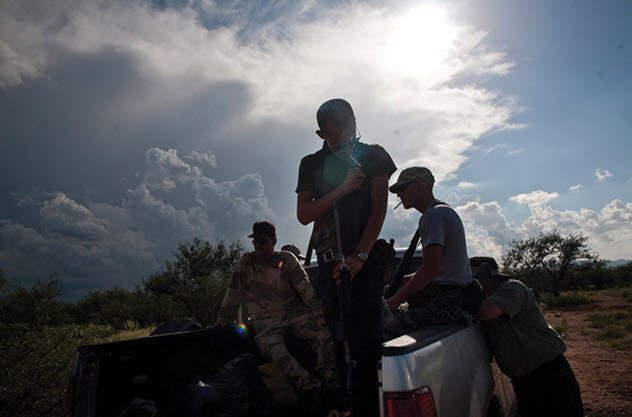Ghastly carnage has also riddled the desert with bodies, transforming the mountainous terrain into a mass grave. The following 10 items delve into these horrors as well as lesser-known appalling events that have been seemingly disregarded throughout the years.
10 False Sense Of Security
In November 2014, members of US Customs and Border Protection (CBP) testified before a Senate Homeland Security and Governmental Affairs Committee about the largest Ebola epidemic in history. To minimize the introduction and spread of the communicable and deadly disease, the CBP conducted enhanced Ebola screenings at five major US airports. Despite drastic but necessary measures, Washington’s governance failed to address the demands of essential border examinations required to halt a growing plague at the southern frontier. According to current White House Chief of Staff John Kelly, a retired Marine Corps general and former SOUTHCOM commander, President Barack Obama’s White House ignored the potential danger of immigrants infected with Ebola entering via the southern border. Thus, the threats of an outbreak transmitted by Africans coming into the country illegally by way of Mexico jeopardized the well-being of US citizens because 6 percent of travelers from particular regions in West Africa have crossed the border illegally. CBP stood firm on their stance that they gave proper training to identify Ebola symptoms. Nonetheless, their valiant efforts were merely comical practices according to agents patrolling the US-Mexico border. National Border Patrol Council spokesman Gabe Pacheco stated, “We have not been trained. There are no protocols in place, and we haven’t seen any protective equipment. We haven’t had anyone tell us these are the protocols you’re going to be using.”[1]
9 Lightning
In 2006, Border Patrol agent Bradford Rubinoff was responding to a car accident near the Mexico border when he and his partner were abruptly launched several feet into the air. “When I came back on the ground, I felt this intense heat and pain throughout the core of my body,” Rubinoff explained. The two officers had been struck by lightning, a common occurrence in southern Arizona during monsoon season. One year later, several more agents were struck near Nogales in addition to two Mexican nationals who were hospitalized after illegally entering the United States near Sonoita, Arizona. In the same vicinity three years later, 17-year-old Fernan Cortez Aguilar of Hidalgo, Mexico, was found dead by Border Patrol after he was struck and killed by a bolt of lightning when an intense storm blew through the region.[2] According to the World Health Organization, there are more deaths attributed to lightning strikes in Mexico than anywhere else in the world, roasting an average of 223 people per year. In fact, between 2005 and 2011, a national electrical association reported that a staggering 12,000 people were injured by lightning. The mountainous terrain of Mexico contributes to the risk of being struck by lightning.
8 Contraband
The US Supreme Court has ruled that border agents are allowed to conduct body cavity searches without a warrant if there is “reasonable suspicion” of contraband. Such a nebulous ruling, however, has led to numerous lawsuits against CBP within the last decade. Case in point: In October 2014, 19-year-old US citizen Ashley Cervantes was returning to Nogales, Arizona, on foot through a port of entry when she was confronted by officers who accused her of carrying drugs. Over the next seven hours, Cervantes was handcuffed to a chair, checked by drug-sniffing dogs, and ordered to undress and “squat” to be visually inspected by an investigator. When no drugs were discovered, Cervantes was transported to Holy Cross Hospital where the unwarranted treasure hunt continued with a male physician “forcefully and digitally” probing Ashley’s vagina and anus. Cervantes’s unpleasant experience mirrors a case in 2012 when a woman, identified only as Jane Doe, was entering the US at El Paso’s border. The US citizen and New Mexico resident claimed that she was chosen at random, probed at both the border and the University Medical Center, and given a CT scan. She was released six hours later and charged over $5,000 in hospital bills.[3] Don’t be alarmed, ladies, men are treated no differently. In January 2013, David Eckert was subjected to anal probes by police. When no drugs were found, he was taken to two different hospitals where the penetration continued because sheriff’s officials claimed that he appeared to be “clenching his buttocks when he stepped out of his car.” Despite the keen observation and several invasive searches, drugs were not present and Eckert was released.
7 Ghostly Sightings
While chasing a group of illegal immigrants near the Lower Otay Reservoir in 1995, border patrol agent Luis Santiago slipped off a cliff, falling 37 meters (120 ft) to his death. The agent had earned a reputation of tracking down drug smugglers. This prompted many to believe that he was murdered and that his troubled spirit continues to haunt the mountainous region to seek revenge. Despite the absurdity of such claims, countless sightings of Santiago’s ghost have supposedly been substantiated by fellow border patrol agent Rocky Elmore.[4] In his book, Out on Foot, Elmore recounts other eerie events throughout his years patrolling the Otay Mountains. In March 1991, two pilots and eight members of Reba McEntire’s band were killed when their airplane crashed late at night. This fueled more accounts of paranormal activity along the border. According to locals, it is commonplace to see shadows dancing across headlights and hear the echoing whispers of a foreign tongue over the hill or the sounds of mesquite branches breaking in the night. All can be attributed to illegals crossing the terrain despite the lack of human presence during such inexplicable occurrences. From Nuevo Laredo to Nogales, stories of the dead haunting frontier towns persist into the 21st century, including tales of men with “sunken-in eyes stumbling into town so parched they look like skeletons.” Many firmly believe that the southern border is not only littered with bodies but the spirits of migrants who have vanished during their journeys north.
6 The Devil’s Highway
Crossing the border illegally becomes increasingly difficult with each passing year due to new and improved technology. In an effort to evade Border Patrol, would-be migrants find themselves further out in the Sonoran Desert, away from towns commonly patrolled by agents. Although there is a reduced presence of Border Patrol, the dreadful dangers of the desert increase dramatically. One route in particular, El Camino del Diablo (“the Devil’s Highway”), is known as being the deadliest migrant trail in North America. Located in southwestern Arizona between Tucson and Yuma, the Devil’s Highway has claimed the lives of more than 1,400 migrants within the last five years. If these individuals are fortunate enough to survive exposure to the elements as well as incapacitating thirst and heat exhaustion, they face the perils of unforgiving wildlife such as rattlesnakes, Gila monsters, scorpions, mountain lions, and bobcats. Those who summon the courage, or perhaps concede defeat, enter Sonoyta, an almost empty border town inhabited by smugglers, thieves, and other migrants desperate enough to try to cross into the US.[5] The desert surrounding Sonoyta is riddled for miles with signs of crossers who encountered trouble along the way—from abandoned bicycles to worn-out boots and women’s garments. Migrants’ belongings strewn along the Devil’s Highway testify to the detrimental lengths one will go to attain the American dream.
5 Corruption
To tighten US-Mexican border security in the early 2000s, the Border Patrol sought to increase its force from 11,700 agents to 18,000 by 2008. Unfortunately, while the number of officers grew, so did corruption cases within the department. One agent in particular, Oscar Antonio Ortiz, demonstrated the absurd incompetence of the agency’s hiring process after it was discovered that he was an undocumented immigrant who had been patrolling the border for three years. To make matters worse, Ortiz—who was described as a “distinguished” officer—admitted to smuggling over 100 illegal immigrants into the US via his government-issued Border Patrol truck. This is just one instance in a growing number of unprecedented crimes that CBP has encountered among its workforce. In 2006 alone, over 25 agents assigned to the border were arrested, with eight convicted in a federal court. The vast majority of wrongdoings involved accepting bribes to release illegal immigrants and smugglers as well as to turn a blind eye to unscrupulous individuals passing through inspection lanes. As for Ortiz, the 29-year-old was sentenced to five years in prison after pleading guilty in 2006 to charges that included conspiracy.[6]
4 ‘Coyotes’
Prior to 2004, the charming occupation of human smuggling was primarily left up to large families living near border towns. Throughout the last decade, however, drug cartels have taken over, causing the loss of human life to increase substantially. An average of 207 undocumented border deaths occurs every year. Nonetheless, such a number is merely an estimate considering the number of unknown bodies yet to be discovered, if at all. Cadavers not washed away by monsoon floods or eroded by the blistering rays of the Sun are commonly found in a mummified state where they had sought refuge within the crevices of arroyos or the shade of a tree. More often than not, those who choose to cross the border are unknowingly signing their own death warrants given that their “coyote” (human smuggler) has no intention of seeing them through the treacherous journey. In such cases, they are abandoned and left to die in the desert without water. It’s undeniable that human life is nothing more than a commodity to the cartel. Thus, the financial gain of the smuggling trade has lured scores of avaricious, murdering vermin. Sadly, between 1998 and 2013, more than 2,700 bodies were found in the Arizona desert alone.[7]
3 Mass Graves
The northeastern part of Brooks County sits on one of the busiest checkpoints in Texas. With more than 10,000 vehicles passing through the vicinity every day, few would have imagined the grisly discovery in the remote town’s cemetery, Sacred Heart Burial Park. In 2014, a team of archaeologists uncovered mass graves containing the bodies of countless immigrants. Their remains were buried inside trash bags, biohazard bags, shopping bags, or nothing at all, piled one on top of the other like a landfill of trash. Krista Latham, a forensic anthropologist with the University of Indianapolis, estimated that the burials occurred between 2005 and 2009. The majority of the dead bore no identification. Though it’s uncertain how many cadavers were negligently disposed of in this way, it is believed that the burials were organized by local funeral home Funeraria del Angel Howard-Williams.[8] According to County Judge Raul Ramirez, for nearly 20 years, sheriff’s officials have contracted with the funeral home to dispose of the deceased recovered from the brush country. The price tag was $450 per corpse. The legality of the county’s practice remains in question while hundreds of families ponder the fate of their loved ones.
2 Black Magic And Voodoo
While vacationing with friends during spring break in March 1989, college student Mark Kilroy was kidnapped and taken to a remote ranch near the US border in Matamoros, Mexico. After hours of relentless torture, Kilroy’s abductors decapitated the college student with a machete, ripped out his heart, and boiled his brains in a kettle. The horrific act was said to be part of superstitious rituals derived from Santeria, African voodoo, and ancient Aztec rites of human sacrifice. Kilroy was one of 12 people mutilated and murdered by the demented gang of drug traffickers who believed the horrific slayings would provide them with protection. They believed that human and animal sacrifices raised a magical shield to protect them from bullets and other evils. Interestingly enough, chilling details of bizarre rituals by drug gangs have led Mexican police to adopt their own form of black magic. While law enforcement officers in Tijuana have been known to tattoo their bodies with voodoo symbols to deter bullets, others paint their faces with the blood of slaughtered chickens while using prayer to guard them along the cartel smuggling routes on the border.[9]
1 Vigilantes
In October 2002, 12 illegal immigrants were waiting in the Arizona desert to be picked up by smugglers when two men abruptly appeared in camouflage fatigues. After descending on the group, the armed duo opened fire, riddling the crossers with bullets. According to migrants rights activists, the killings were part of a growing vigilante campaign responsible for a series of murders along the southern border. Between June and September that year, eight migrants were found gagged and handcuffed in the desert west of Phoenix. Seven of the men were shot in the back of the head while the eighth was stabbed to death. Due to the drastic rise of migrant murders along the border, many fear that large numbers of armed “citizen border patrols” (aka “Minutemen”) have produced a team of assassins. In April 2012, four white men wearing camouflage opened fire on a packed truck carrying immigrants near Eloy, Arizona, killing two. Matt Browning, a retired Arizona police detective, said, “What we do have is a lot of angry, militant white men on the border sitting like hunters waiting for these people to come across.” Despite President George W. Bush condemning the group, which he characterized as “vigilantes,” local support continued to grow.[10] Following the slaying of Eusebio De Haro, a Mexican immigrant who was shot dead after approaching 76-year-old rancher Sam Blackwood for water, Blackwood was convicted of a misdemeanor deadly conduct charge and fined a mere $4,000. After the verdict, some jurors had the audacity to share hugs and shed tears while rejoicing with the Blackwood family.
